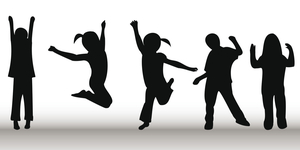A recent post by Kaiser and Rasminsky on children with challenging behavior examined the issue of implicit bias, and its role in the suspension, expulsion, and other potentially unfair treatment of very young children. We wanted to dig a little deeper. What is implicit bias? Why does it matter? What can we do to address it?
The Kirwan Institute describes implicit bias as the “attitudes or stereotypes that affect our understanding, actions, and decisions in an unconscious manner.” With such a broad definition, it is easy to understand that implicit biases affect us all—including young children—whether we are conscious of them or not. (You can test yourself for implicit bias here.) While evidence for implicit bias has been shown across the judicial, criminal justice, and health fields (among others), this brief post focuses on implicit bias in early education. It is particularly important because it stands to substantially impact children’s lifespan outcomes, and may play a role in shaping their own development of biases, both implicit and explicit. We present below a few studies, selected from a broad and growing body of literature on implicit bias in education, that may help us better understand what it means, which students may be most impacted by it, and what factors (e.g., teacher race) may influence implicit bias.

Because this content only scratches the surface of the complex and intertwined issues of implicit bias, explicit bias, and social determinants of health and related outcomes (see, for example, disparities in preschool suspension), we encourage you to explore the resources listed at the bottom of the page and continue to learn about how implicit bias affects young children’s educational experiences.
In a seminal study in 1968, Rosenthal and Jacobson told elementary school teachers that a random set of students they had selected were likely to show significant intellectual gains. These students--although no different from their peers at the outset--showed significantly greater gains on test scores, particularly the students in grades one and two. This study was one of the first to suggest that teacher expectations influence student outcomes.
A 2015 nationally representative survey by Gershenson, Holt, and Papageorge, collected data on teachers’ expectations for their students’ future success. The authors looked at pairs of teachers who provided their expectations for the same student, and looked at differences in expectations based on the interaction between teachers’ and students’ races. Nonblack teachers had significantly lower expectations for black students than did black teachers.
In 2016, Gilliam, Maupin, Reyes, Accavitti, and Shic, conducted two tests to assess biases in early care and education teachers. In the first test, teachers were told to expect challenging behaviors (although none were present), and then viewed a video of mixed race and sex preschoolers engaged in normal activities; teachers’ eye movements were tracked as they watched the video. Teachers gazed longer at boys than girls, especially black boys. In the second test, teachers read vignettes about a child with challenging behavior--you can read more about that in the study itself. Articles in The Atlantic, and YaleNews, and on NPR were among many reporting on the study—it is shocking to think about children as young as preschoolers facing bias, and considering the implications for their long-term school and life outcomes as a result.
There are some potential policies that may help to mitigate racial biases in ECE, according to a paper from the Kirwan Institute for the Study of Race and Ethnicity, including:
- Using data to identify disparate treatment based on student demographic features, and employing data-informed decision making processes to limit judgment calls for issues such as discipline and class placement;
- Creating school cultures that are culturally representative and do not perpetuate stereotypes such as male-math associations; Hiring a diverse staff that reflects the experiences of the student body;
- Providing professional development around implicit biases and cultural competencies;
- Discussing race and bias with young students by using story-telling or perspective-sharing activities; Using representative classroom artwork and materials to include students of various backgrounds in varied roles and activities;
- Providing clear definitions of appropriate and inappropriate behaviors and standardizing evaluation and punitive processes to reduce the influence of personal biases.
In their blog, Kaiser and Rasminsky suggest more personal practices that teachers and providers can adopt:
- “It’s extremely important to build strong relationships with all the children we teach and use every interaction to show how much we care about them and believe in their ability to succeed. Little things mean a lot, for example, saying their names correctly. Mispronouncing or changing a child’s name insults the child, the family, and their culture and can have a lasting effect on a child’s self-image and world view.
- Get to know the children’s families and learn about their lives and culture, paying special attention to those whose beliefs and experiences are different from yours. Head Start has shown us that family involvement and home-school collaboration improve children’s behavior at school. Home visits open doors, both literally and figuratively.
- Make a point of connecting with people who are different from you. This can be hard because many of our neighborhoods are segregated, so use your ingenuity. Invite guest speakers into your classroom, attend a service at an unfamiliar church, or follow the example of Justin Minkel, 2007 Arkansas Teacher of the Year, and arrange a meet-up for families in a park or playground.”
Additional resources include:
- Kirwan Institute for the Study of Race and Ethnicity, Ohio State University
- Anti-Defamation League’s Resources for Creating an Anti-bias Learning Environment
- Teaching for Change’s Anti-bias Education resource page
- National Association for the Education of Young Children (NAEYC)’s Useful Links for Anti-bias Educators
- State of the Science: Implicit Bias Review 2014